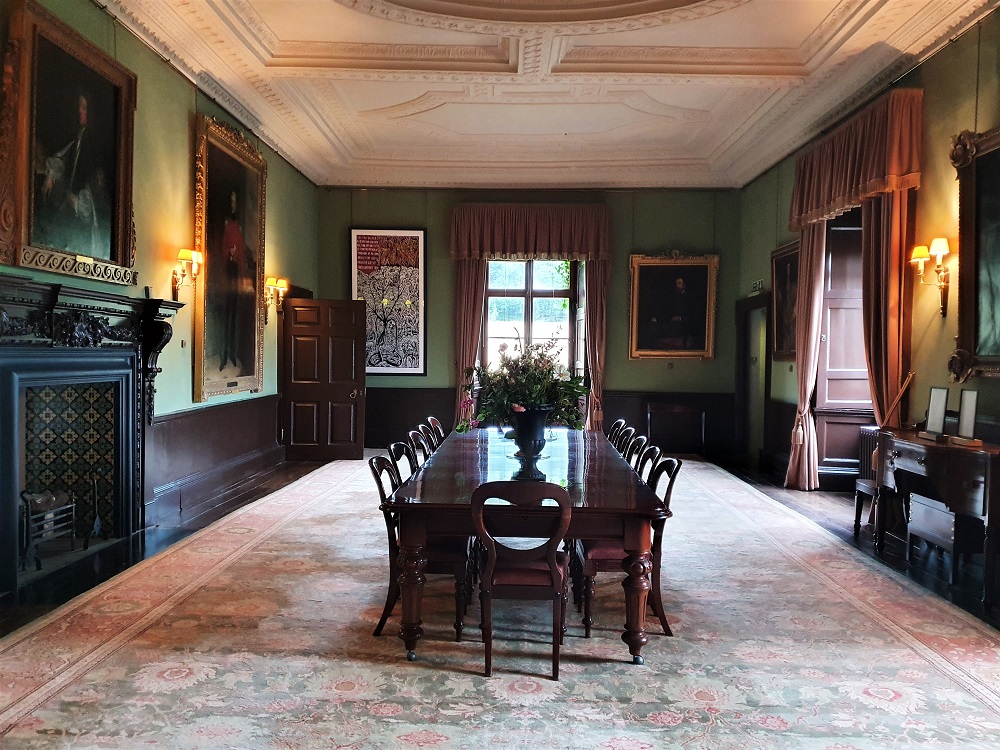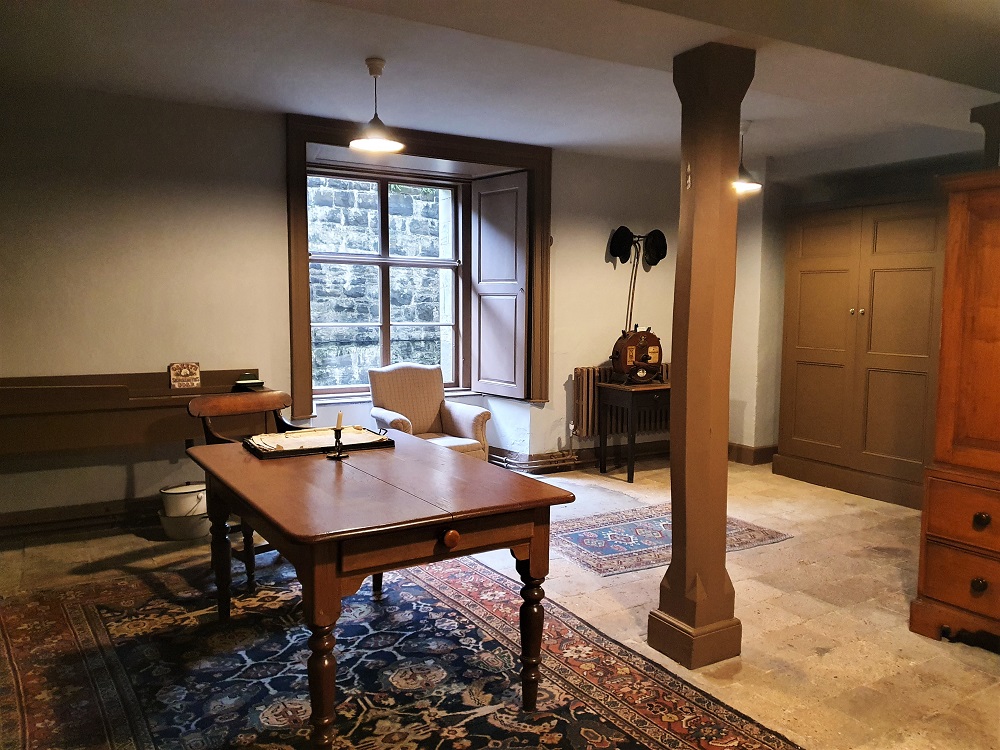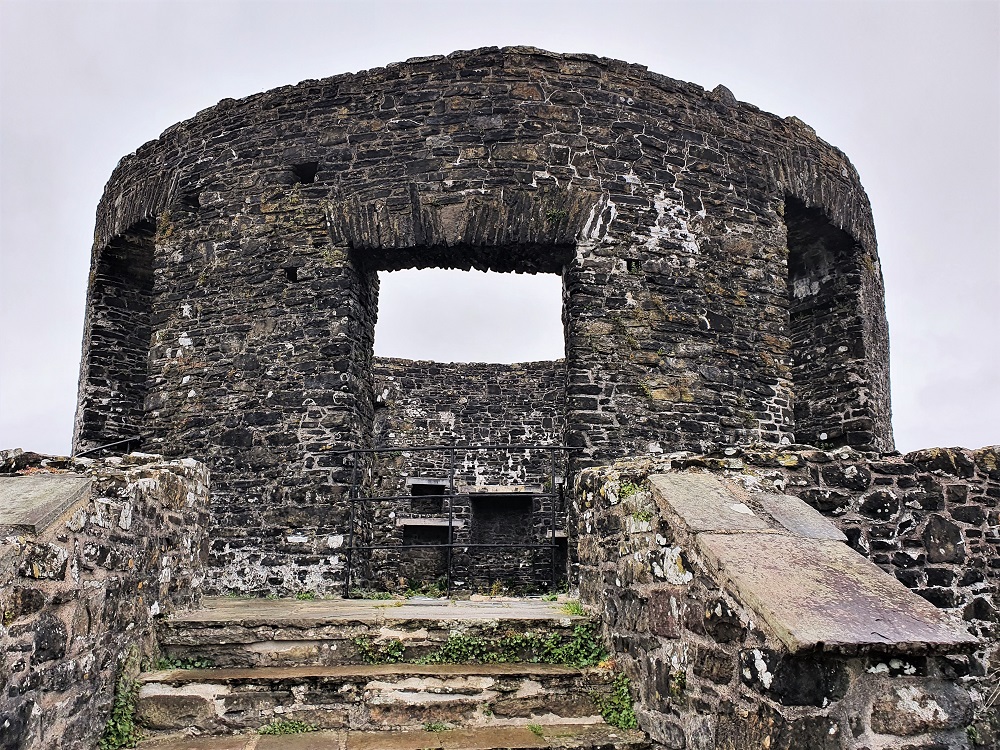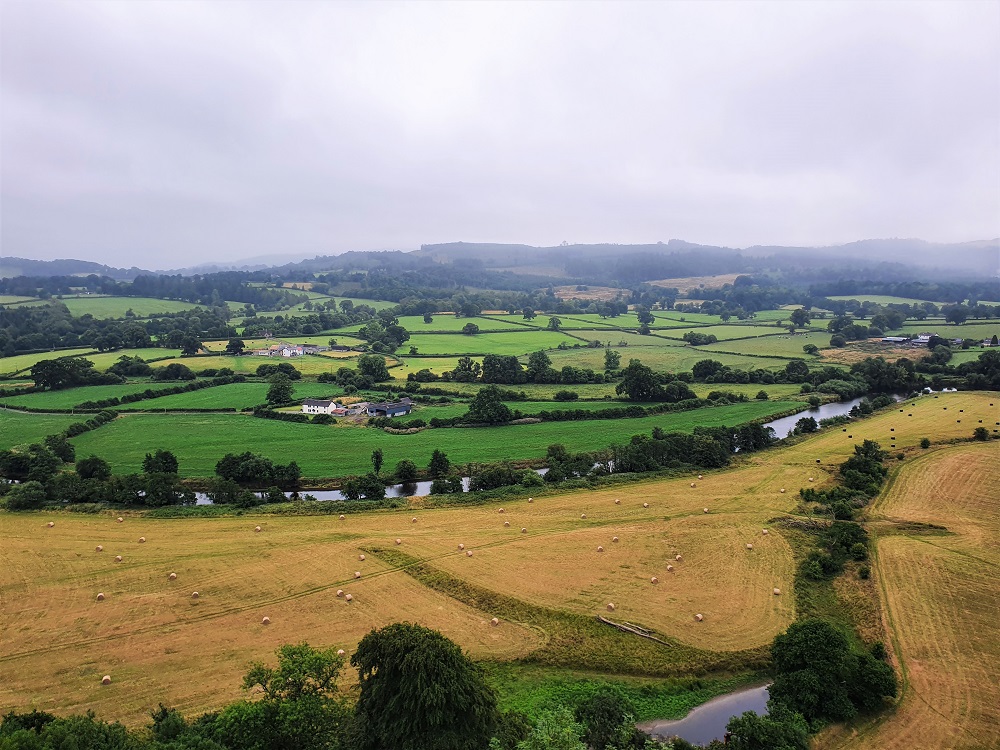Over the summer I was working at the National Eisteddfod, the annual Welsh cultural festival that this year took place near Tregaron in west Wales.
Deciding to make something of a weekend of it before I started work, I stopped off at Llandeilo in the neighbouring county of Carmarthenshire so I could spend a couple of days exploring the nearby countryside.
Top of my list of places to visit was Dinefwr. Partly because I had such a great time when I visited a few years ago, but also because the estate’s grand pile, Newton House, was closed during my first trip and I was itching to take a look around.
On arriving at Dinefwr, it was raining quite heavily so I made a beeline for Newton House and its warm, dry interior.
Newton House is a large Jacobean mansion with an 1850s Gothic facade and was the home of the Rice family, the descendants of Rhys, Prince of Deheubarth, for some 300 years.

The house sits in the middle of the Dinefwr estate, an 800-acre estate run by the National Trust (above) that also boasts a castle (Dinefwr), parkland, a farm, more than 100 fallow deer and some 300-plus ancient oak trees.

On going inside Newton House, I was greeted by a couple of friendly volunteers and began my tour in the attractive dining room (above).
I think I was supposed to continue the tour by turning left into the living room, but I was distracted by the stairs to the right that led downstairs and decided instead to veer off the tried-and-tested visitor trail.

This was perhaps a mistake as I found myself going backwards through the servants’ quarters (above) and I think it would have made a lot more sense if I’d started from the other end.

Nevertheless, I had a good look around the various rooms, which included a small locked room housing the pile’s silver collection (above).

Having finished touring the servants’ quarters, I made my way back upstairs and rejoined the visitor’s route in the comfortable and homely living room (below).

Here, I was greeted by a knowledgable volunteer who pointed out various features.
The volunteer was a Welsh speaker and when she discovered I also speak the language, she began enthusiastically explaining the history of the extensive renovation the house had undergone since the National Trust took over the running of it.

She also took me to have a look at the grand 17th century staircase in the next room and explained if you stand in a certain spot on the stairs you can see a ghostly face appear in the portrait (above).

I headed upstairs to see if I could spot the ghostly apparition and then popped into the balcony room to my left to take a look at the small formal garden outside.

From the gothic window, I could just make out some of the estate’s many deer in the distance (above).
The upstairs of the house is home to a series of small exhibitions about the house and the estate.
The first exhibit looked at its history, including the arrival of the Romans, the power and influence of Dinefwr Castle, and the estate’s lost mansion.

The second exhibit revolved around a series of objects found under the floorboards when the ground floor ceilings were renovated at the turn of the millennium.
It was the first time the artifacts had been displayed in the house and there was quite a random selection of pieces.
The display also showcased some samples of wallpaper taken from Aberdeunant Farmhouse, a National Trust-run property that’s also in Carmarthenshire.

The final exhibit, Treasured Land, focused on a set of paintings that are thought to have been commissioned by the Carmarthenshire MP Griffith Rice when he became lord of the manor in the late 1600s.
The paintings depicted different scenes from the estate, including a couple of Dinefwr Castle (above).
By this point, I’d seen everything there was to see in the house, so I headed outside into the rain to explore the rest of the estate.

My first port of call was, naturally, Dinefwr Castle (above), the ruined stone fortress that sits high on a rock overlooking the estate and the Tywi Valley.
The castle, which is looked after by Cadw, the Welsh heritage agency, was once home to Rhys and his fellow princes of Deuheubarth.

There isn’t a huge amount left of the castle, but you can walk along the remaining parts of its ramparts and go up a couple of its towers (above), where you can enjoy spectacular views over the Dinefwr estate and the surrounding countryside (below).

From the castle, I continued my tour by going down the hill into Bog Wood, where I followed the boardwalk until I reached the mill pond (below).

Here I veered off along a path to my right, which took me up another hill. My destination was Cae Lan viewpoint, which promised fine views over the estate and towards Dinefwr Castle (above).

After admiring the view, I headed back down the hill to the mill pond and followed the main path through the deer park until I found myself back at Newton House.
In need of a warming cup of tea as it was proving to be very a damp day, I stopped off at the café. Then continued my walk around the estate, following a trail past the cattle shed and some holiday cottages.

I then cut across the park, back towards the car park, before turning off across some fields, past some curious sheep, in the direction of a pretty old church I’d spied on driving into the estate.

When I reached Llandyfesiant Church (above), I found it was closed and in a bit of a dilapidated state.
But there was a sign on the door explaining that friends of the church have banded together in the hope of saving it. I hope they succeed as it’s a lovely little monument and it would be a shame to lose it.
By now, I’d seen just about everything there was to see on the estate so I made my way back to my car and onto my hotel for the night.
I really enjoyed my visit to Dinefwr. It’s a charming place and there’s lots to see and do.
While the house is fairly basic and there isn’t a huge amount to see compared to some other National Trust properties, the estate as a whole is superb and well worth a visit if you’re ever in Carmarthenshire.
Info
Newton House, Llandeilo, Carmarthenshire SA19 6RT
House: £8 adults, £4 children. Car park: £5.50
nationaltrust.org.uk/visit/wales/dinefwr

Thanks for the tour. I enjoyed it!
LikeLiked by 1 person
Great, glad you enjoyed it!
LikeLiked by 1 person
What a lovely place, just my sort of visit. One of my cousin’s married name is Rice, it never occurred to me that it might derive from Rhys.
LikeLiked by 1 person
It’s the anglicised form and there are a few different versions. Price is also derived from Rhys as it’s from ‘ap Rhys’, which means ‘son of Rhys’.
LikeLike
I live and learn!
LikeLiked by 1 person
The Newton House looks impressive. I’ve always enjoyed touring through historic houses like this and imagining what it would be like to live here. The grounds also look interesting, especially the ruins from Dinefwr Castle.
LikeLiked by 1 person
I often wander around castles and old houses trying to imagine what it must have been like to there. It’s fairly easy with somewhere like Newton House where all the old furnishings are in place, but I find it quite hard with some castles, particularly ones like Dinefwr, where there isn’t much left of the original structure.
LikeLiked by 1 person
Thank you for sharing this bit of history. Great photos. It looks like a place I would like.
LikeLiked by 1 person
Thanks Mélodie!
LikeLiked by 1 person